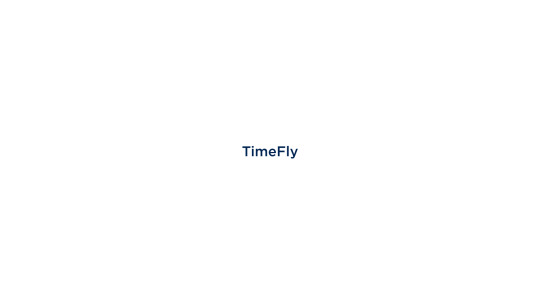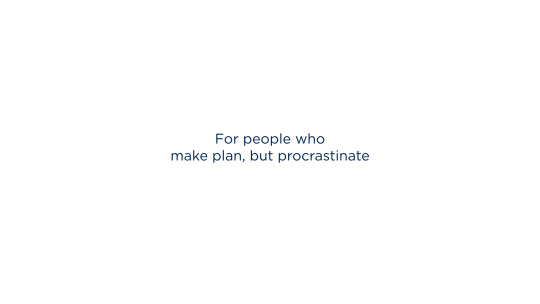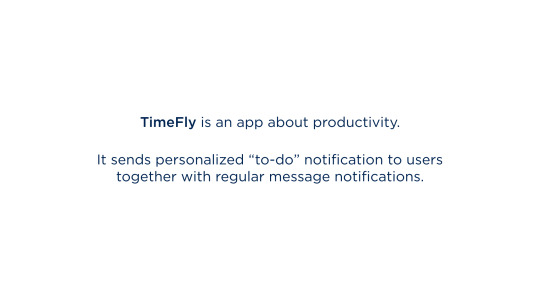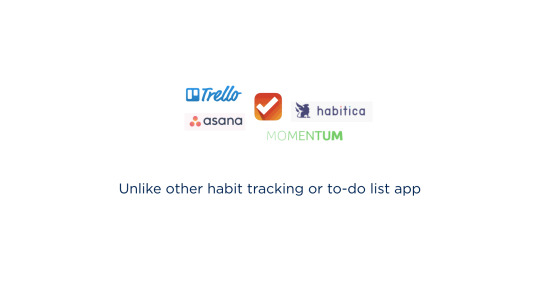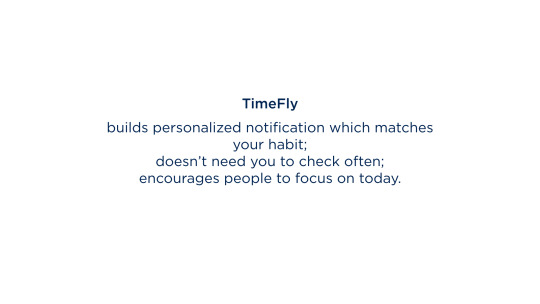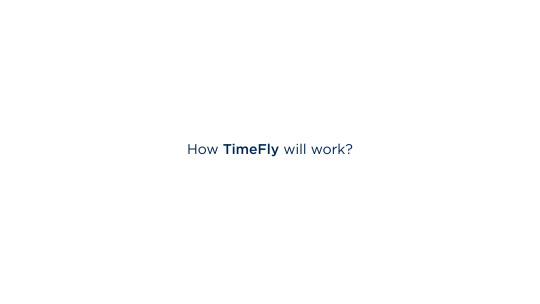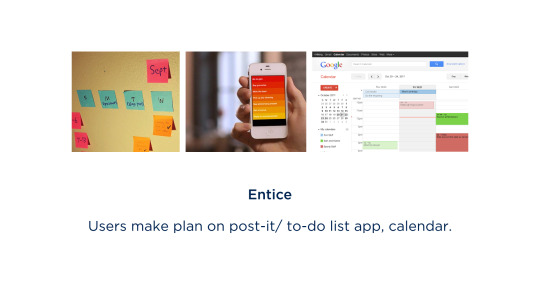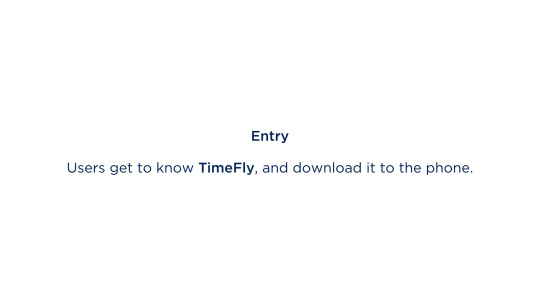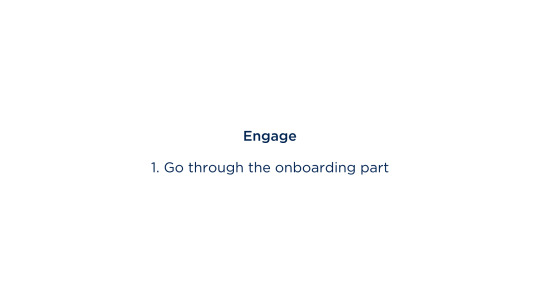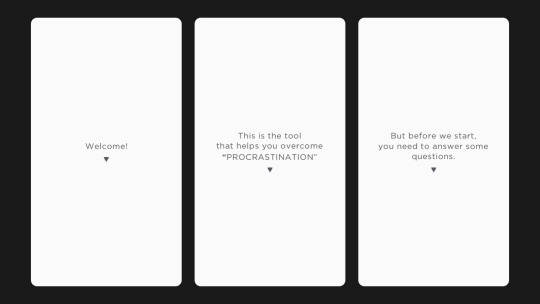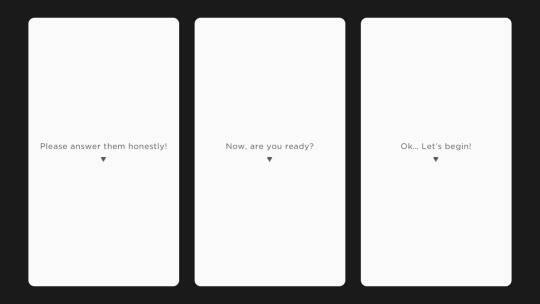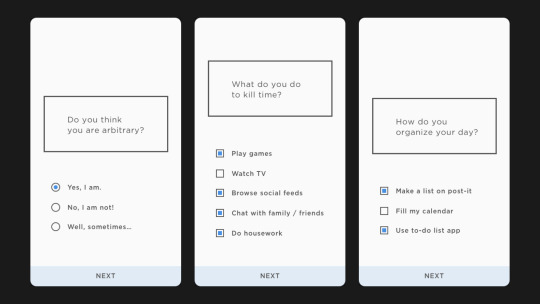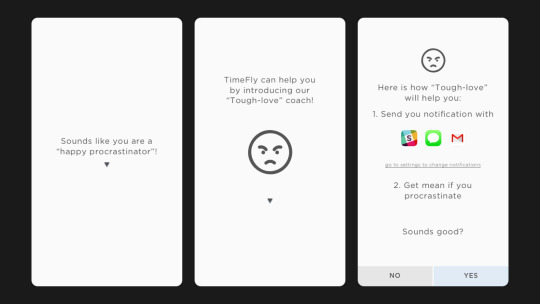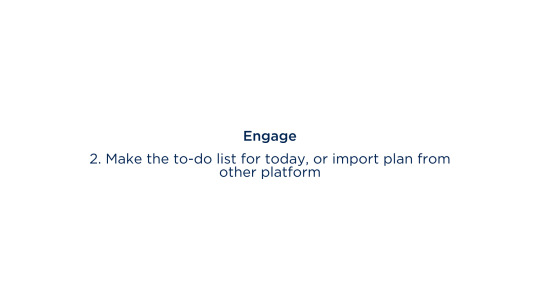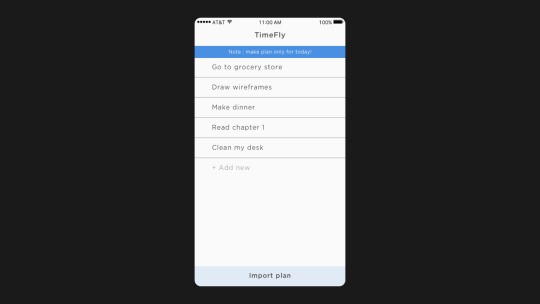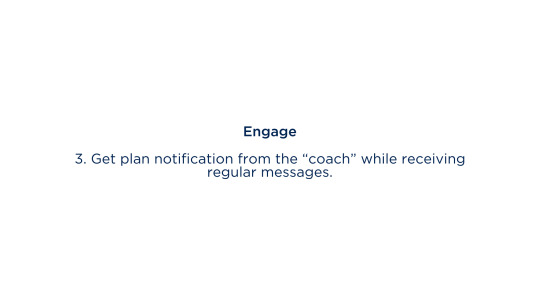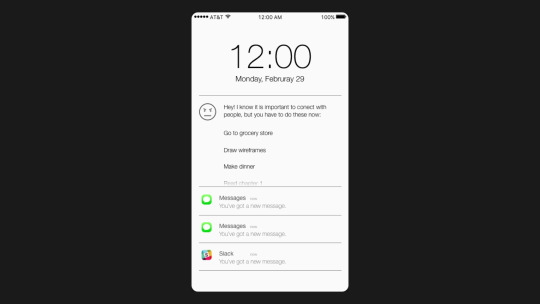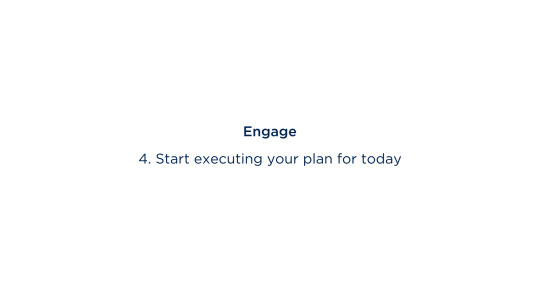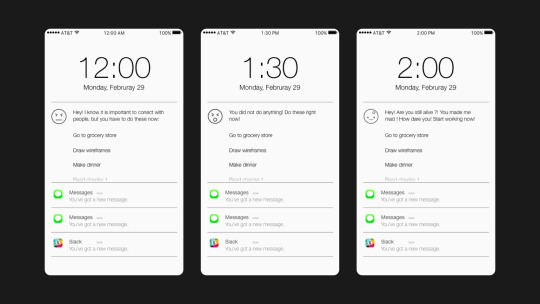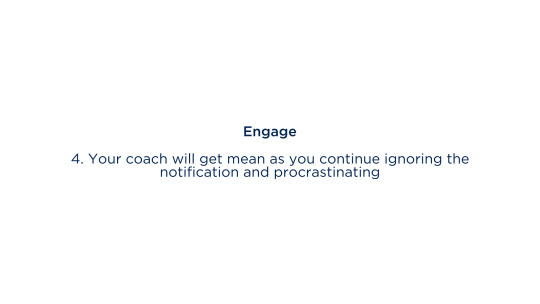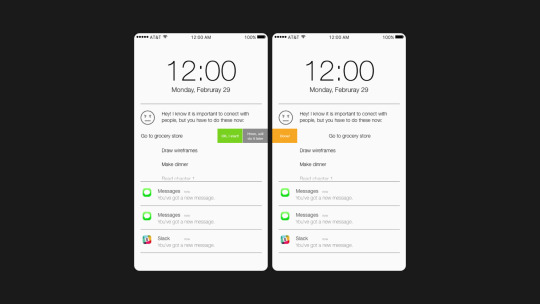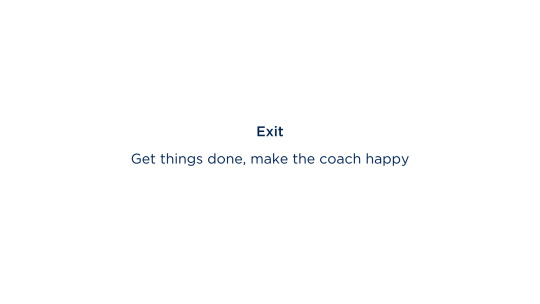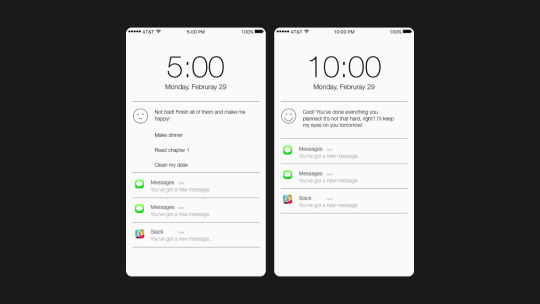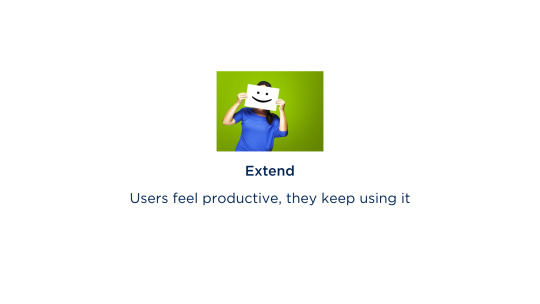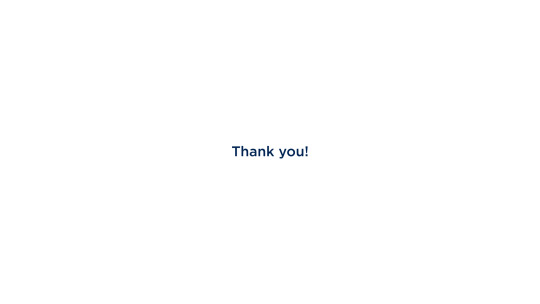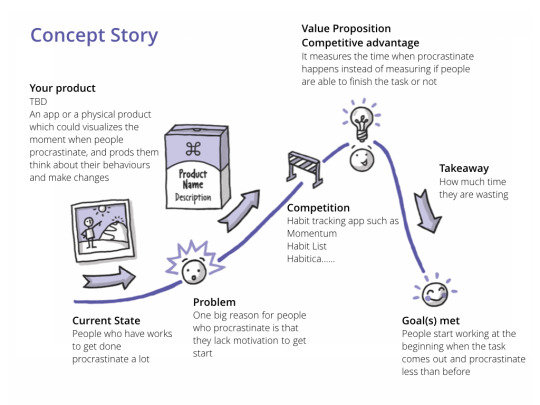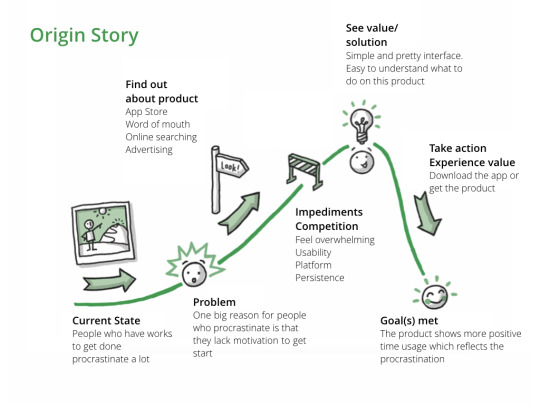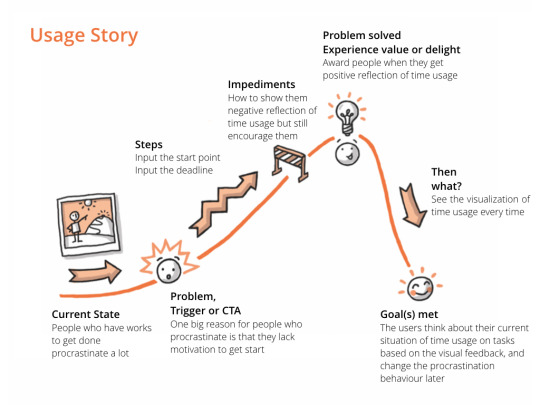Don't wanna be here? Send us removal request.
Text
Process: draft of solidified idea, value proposition, 5E
Draft of solidified idea
Inspired by “The Power of Habit”, I iterated on how the habit loop model could work in my thesis idea. I also thought about these two questions: 1. do I want to cultivate a new habit for procrastinators? 2. do I want to make changes on their existing habit? No matter which direction I will go, another big problem I need to answer is how to make my idea fit to their daily life.
What could be a good intervene in people’s procrastination process? I was thinking some images of working, getting interrupted, procrstinating, etc. Nothing super specific. Then suddenly, I got one inspiration about notification:
we get tons of notification everyday
receiving, responding, waiting notifications becomes our habit already.
it could be an interruption for work, or a way for people to consume time.
How about changing something on these notifications?

Value proposition & 5E
Then I started to work on the value proposition chart to state my idea more clearly.
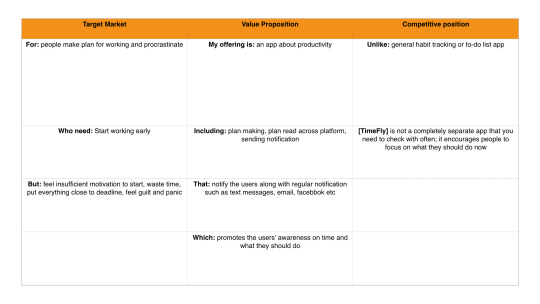

Feedbacks I got from class
The engage part is not that clear
Is there any way to build some personalities in the app?
0 notes
Text
Process: competitor study, interview findings
Competitor study
I listed several products that either my idea could compete with or have great value I could learn from.
Trello - a work board tool that organizes people’s lists
Asana - a way for teams to track and manager their works
Flowstate - a “dangerous” tool for preventing writers procrastinating
7 minutes work out - it’s particular for fitness. It makes people focus on certain amount of time for exercising
Unstuck - a digital community based service that helps people figure out their problems during the work and go over those problems
Momentum - a tool of helping form habit by visualizing people’s daily efforts
Habitica - a task making and tracking tool that builds on game
Don’t move - an app that make people stay away from their phone and share effort score to social media
Clear - a simple to-do list app with fluent multiple gesture supports
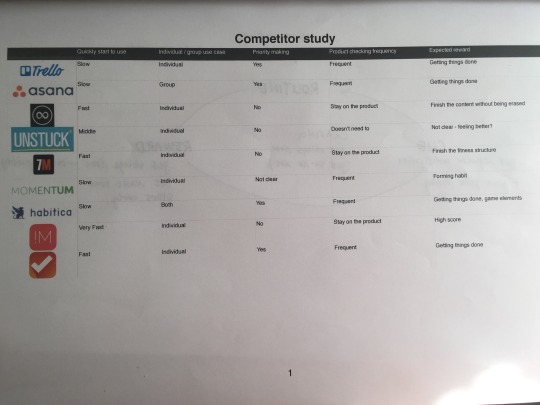
After comparing both pros and cons for each competitor, I had a sense of what values I want to keep in my idea. I hope it is for individual using, it can be started quickly, it encourages people to prioritize their works, it doesn’t need users to check often and it has expected reward/ punishment.
Interview findings
People have many activities in daily life, you don’t know which could trigger their procrastination happening. It is hard to manage everything for them, because people want to feel that they have ability to control. Instead of continuing widely general use cases, I want to narrow down my audience. I started to interview 4 people with these following questions-
When do you procrastinate most?
Do you think you procrastinate for particular project?
Could you describe some works you’ve done recently that makes you feel you procrastinated?
What does procrastinate mean to you? / How do you define procrastination?
Could you describe your moment of procrastinating more specifically?
What do you do for work productively? What tools are you using? If you are using different, how do you see the pros and cons of each tool? What’s the different of each tool?
Notes/quotes from interviewees
“I use white board at home. I remember what I wrote on white board because I see it everyday.”
“I don’t remember clearly what I put in Clear app. I only go back to it when I wanted to add new item.”
“Everyday I made a post-it on my desk, and I always finish items on it. I wrote some long-term goal in my notebook, but I don’t check it often, sometimes I forget those goals.”
“I always procrastinate on important things. But if I work with people, I don’t procrastinate it because I don’t want them to disappointed with me.”
“I set text message notification in my calendar. I think it’s useful for me. Everyday I’ll get those notifications and I’ll get those things done”
I got some findings from their answers, the big one is ----- even though they use different tools to organize works, the one that exposes very often is the most powerful tool for keeping them working instead of procrastinating.
1 note
·
View note
Text
Thesis concept statement (updated)
TimeFly
Concept statement
FOR procrastinators WHO need motivation to start their work as soon as possible, “TimeFly” IS A visualized physical timer THAT allows users to see time passage of the task intuitively. UNLIKE any other habit tracking products or Pamadoro timer, TimeFly IS a physical product and showing time passage visual feedback both positively and negatively.
Bank of Time
Concept statement
FOR procrastinators WHO need motivation to start their work as soon as possible, “Bank of Time” IS A digital productivity app THAT allows users to see time passage of the task intuitively and set reward to themselves with their own money for getting motivated. UNLIKE any other habit tracking apps, Bank of Time IS measuring time and efforts by connecting reality (your money).
Criteria List
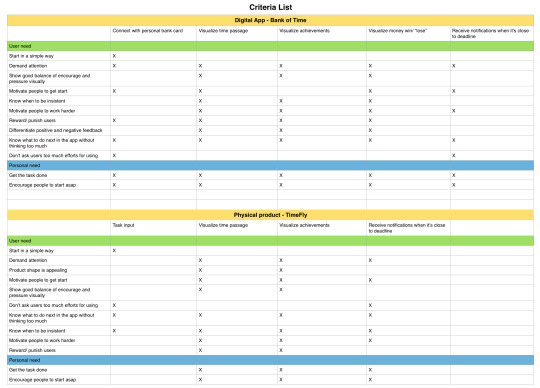
0 notes
Text
Alternate prototype and its reflection
For last two weeks, I was working a prototype of new approach to my thesis topic. Based on the former researches and brainstorming process, I kept thinking a possible way that encourages people to start working.
My last prototype added a process before they work, which is planning in a better way. However, there is a big problem for planning is that people can’t predict what is going to happen. And this factor may cause potential interfere or following procrastination to their work. So ,what could people actually do before working without procrastinating?
What if they could know more about their time spending in a data visualization way?......
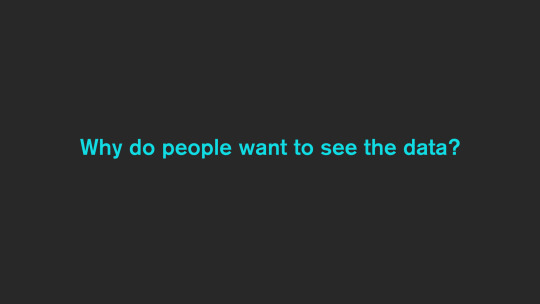

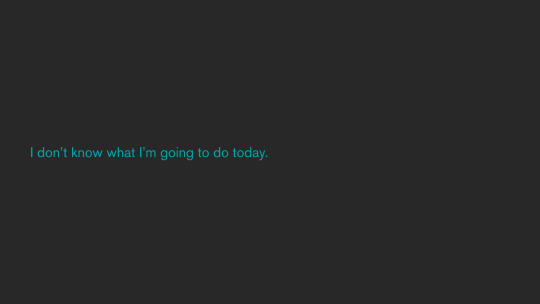
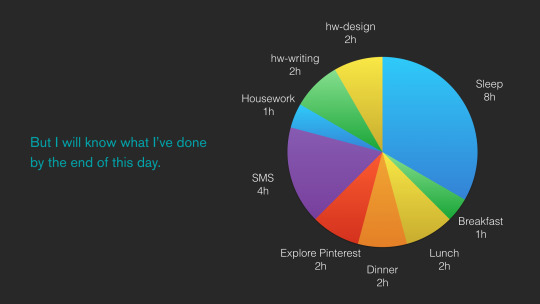
The sketch of this idea
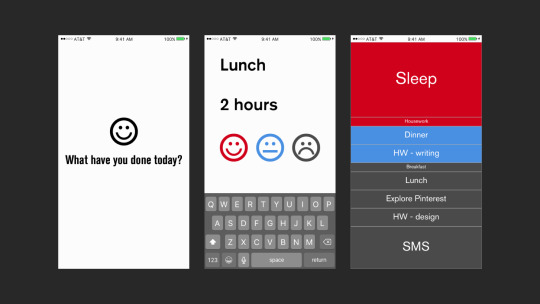
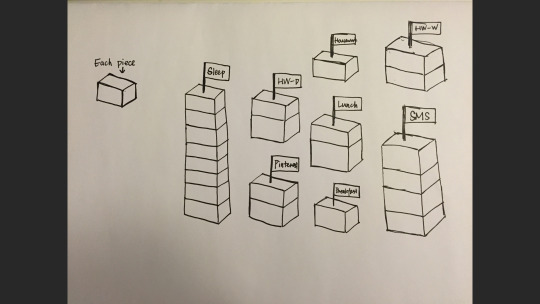
I was imaging this could either live on mobile phone, or on physical objects. The idea is that by the end of each day, people could think about what they’ve done and how much time they spent on each task. By marking their own feelings, therefore, the users could see their time distribution, and this could hopefully provoke them to make changes in the future. The ui and ux design is far away from being perfect though.
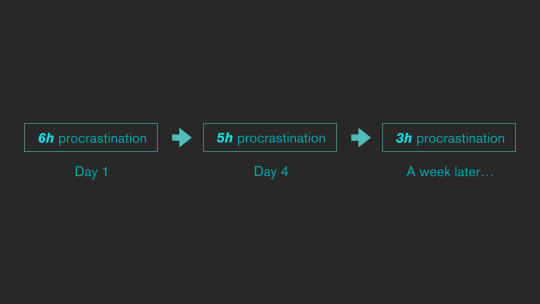
Hopefully, this effort will work like the picture above.
Reflection
After I presented this to the class, I got several feedbacks from my classmates and Eric:
I need to be clear about what matters to people more? Time consumption or specific achievement? What things I want to measure ----- if people finish the task or not, how much time they left before the deadline, or something else.
People will get inspired by their success. No matter which way I’m going to visualize, people want to see positive side. If I always say my failure, I will be frustrated and don’t want to use a product which makes me overwhelming.
There are some apps about habit tracking in the market. How do I differentiate my idea with those existing products? (Actually my idea is different from habit tracking in deed)
0 notes
Text
Fresh start brainstorming
Problem Space
One big reason of people procrastinating is lack of motivation. The reason why they don’t want to start working could be such as people don’t know what to do, their health condition makes them feel hard or lazy, or they don’t know what to anticipate from the work.
New brainstorming
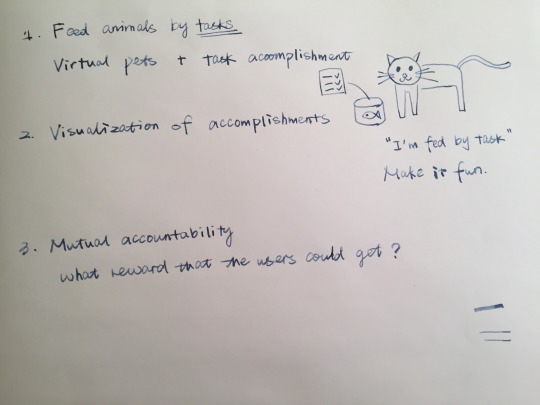
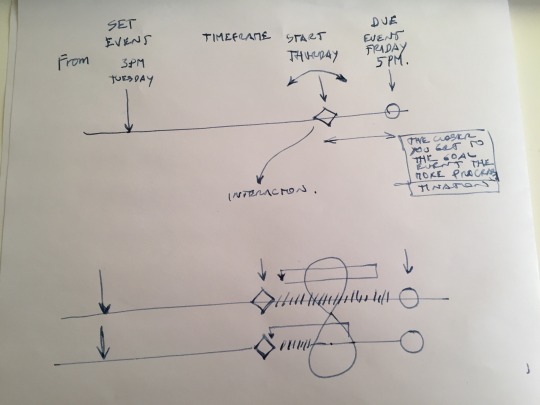
This week, I worked with Emily and Marcelo to start a new round of brainstorming.
Picture 1 is what I got from Emily:
Think about a fun way for people to do their tasks. Maybe a virtual pet that is fed by tasks?
A way that allows the users to see their accomplishment. People reward themselves by what they have done
Picture 2 is what I got from Marcelo:
Generally, people get two date of the task ----- one is the task setting date which we call it start point, another is the due date which we call it deadline. The closer people start near the due date, the more procrastination time they spend on. Maybe there’s a way to promote people’s awareness of time by visualizing the time left and tasks.
My thoughts
It’s interesting that both of my classmates came up with the idea of data visualization. I was starting to think about potential solutions around this. Also, one thought derived from the article that Eric suggested us to read is data should be able to present stories and prod people to make a change. Especially the example of Waterlogged, it tracks people’s daily water intake, remind hydration and encourage people to drink water and stay healthy.
If I apply the data visualization into my topic, could it not only track people’s daily work habit, but also urge them to start working?
Decision making criteria list
In order to make a criteria that helps people evaluate my idea, I need to narrow down attributes that are important for users and myself.
For the users:
People need motivation to work, and they also need motivation to use the product.
Form user experience perspective, the product should be easy and simple to use. because any difficulty or burden will make people procrastinate to use this product. If the users need to input something, the interface should be clear and welcoming. If the product shows something to the users, the way of presenting should be easy to understand.
My personal criteria
The product shows people why “something” could be the motivation of starting to work. Like people eat because they are hungry, people will use the product because they need to utilize the time in lieu of wasting it.
0 notes
Text
Several new inspirations resources I got during the break
During the break, these resources I saw just hit my mind:
1. New design that works for people’s attention
youtube
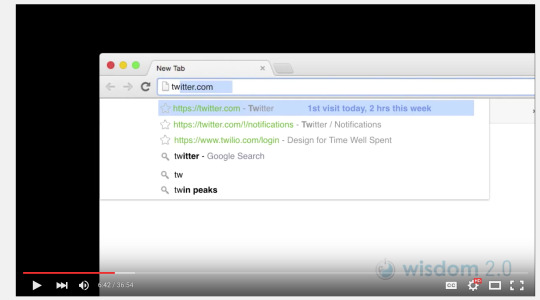
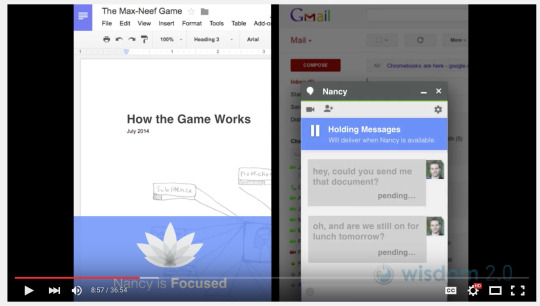
Give people mandatory limit setting that helps them stay focused
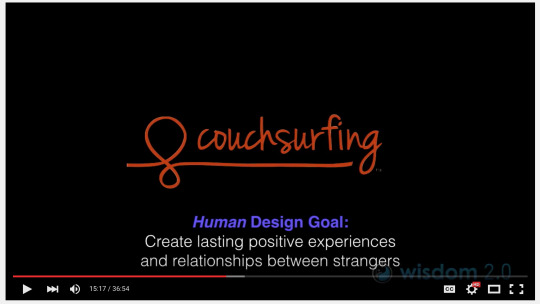
The service like couchsurfing or Airbnb is not only for helping people find a place but also connecting strangers who have mutual need.
2. Do Not Move
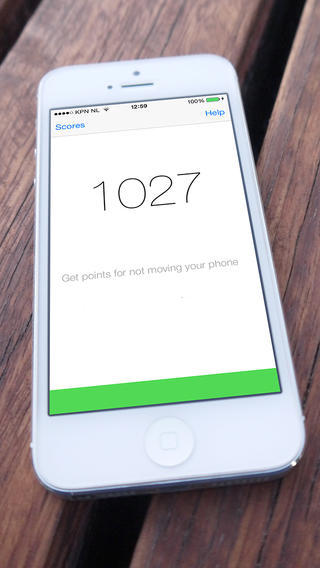
People will get points as long as they don’t move their phone. This simple action encourages people get away the distractions from the phone. The points records people’s accomplishment on this.
3. Momentum Habit Tracker
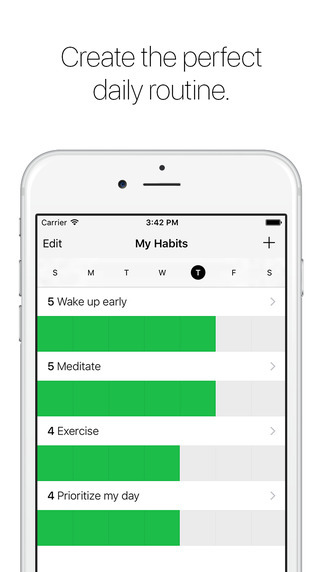

Momentum tracks users’ daily habit. It helps users to achieve their goal by visualizing the process in a simple way. For me, it will works well on long-term activity which people think they do nearly everyday. Instead of telling users “Hey, you haven’t done this” or “You should do X now” straight forwardly, people read the charts to know the unfinished or yet started things.
4. Clear – Tasks, Reminders & To-Do Lists
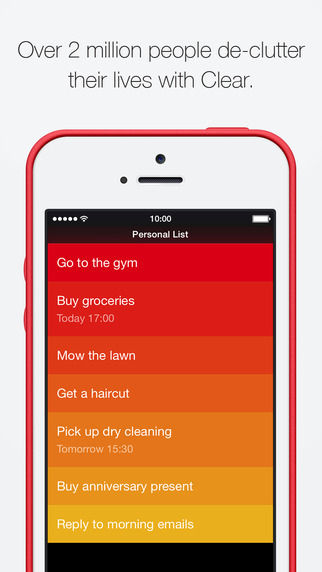
This app builds the best version of what I was trying to do last semester ----- very clean, neat to-do list with easily-setting priority list. The applying of multi-task gesture also makes everything easier in this app. I already start to use it!
4. Dubble ----- Mix your photos with the world
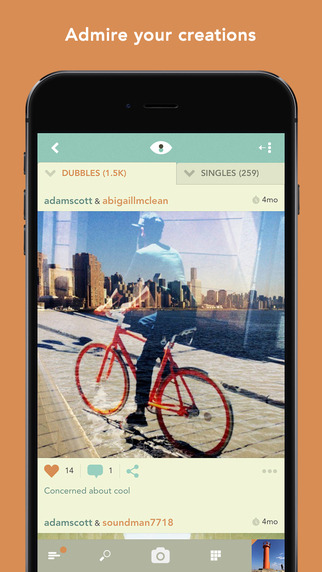
It’s apparently an app about photo editing. The inspiration I got from this is the way it connects to other people. There are several photo editing apps in Appstore which are particular for double exposure effect. Instead of choosing pictures by yourself and adjusting every setting on your own phone, this one create random surprise by mixing your photo with others’.
Last semester, I had another concept about procrastination solution which is about pairing people to finish tasks together. However, I was stuck in what I could provide to people as a reward that encourages them to do it. This random reward idea maybe a way I can learn with.
0 notes
Text
Evaluation of last experiment
To think about next step of my procrastination topic, I reviewed the experiment I did by the end of last semester in several aspects.
The strongest component in my prototype
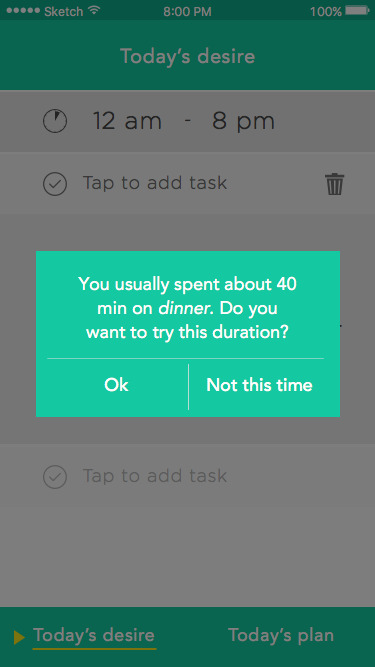
An AI assembled feature which tracks the users’ habit and sends notification to them when users could make inaccurate estimation of their task duration.
The weakest component in my prototype
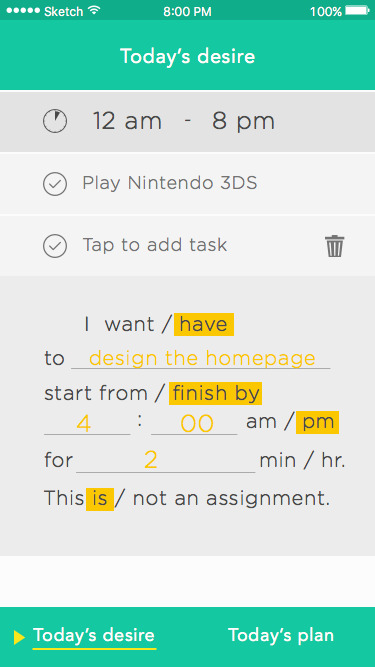
Too much moves for users to set up their tasks
It doesn’t differentiate the list made by users and the list automatically generated by the app
Areas of future exploration
For the last experiment, the interaction is between the users and their mobile device. In future, the interaction could
stay on mobile. But I hope I can come up with a way that prods people more directly
connect people and people. A way that makes mutual accountability work for helping procrastination
New areas that I haven’t explored yet
Many reasons could cause procrastination. Since I explored the area of encouraging people to start, I didn’t experimenting how to remove distractions during the work or how to motivate people finish their work by the end. Those two areas are also essential to this problem, but based on my research and observation, time that people wasted before getting start is more than those two phases. So I want to focus on fixing start phase first.
What parts of experience I have overly focused on
Maybe I focused on too much about specific tasks that set by users. My goal is no matter what kind of task they are going to do, they should start it sooner. What parts of experience I have gone under explored
The direct trigger could be a simple move, that can make people start
0 notes
Text
Recap to my former prototype
By the end of last semester, I made a prototype for my procrastination topic.
Problem Space
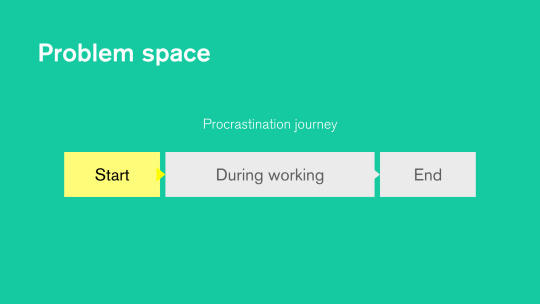
People could procrastinate at any phase in their work - they could lack motivation at the beginning, they may get distraction during the work, or about to the end, they start to procrastinate because they think they can anyway finish it.
I hope to fix this problem at the start phase for the fact that the later people get to start, the more procrastination they have.

Here is a reason that I got based on my research for why people lack motivation of working: they don’t have clear mind of what they are going to do. People plan for their work, but they can’t plan it well especially when they have wrong estimation about the duration of each task. They feel bad when the plan is not going as they expect. After several times, they may stop planning and start procrastinating.
Initial Concepts

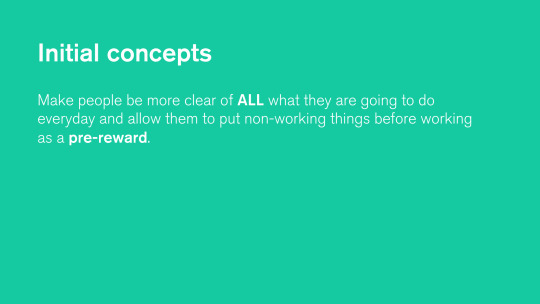

My initial concept is making people do non-working things such as entertainment or relaxation with a limited time before working. But after I tested with several people, I figure out that actually they don’t care this process and their goal for every day work is finish prior goals with a clear schedule.
Advanced Concept
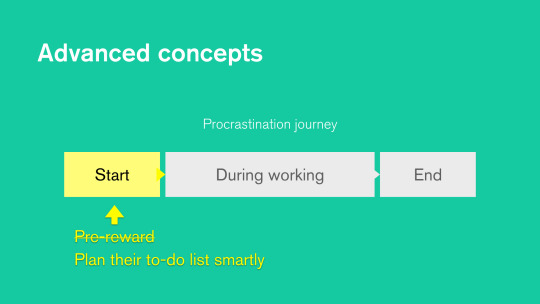
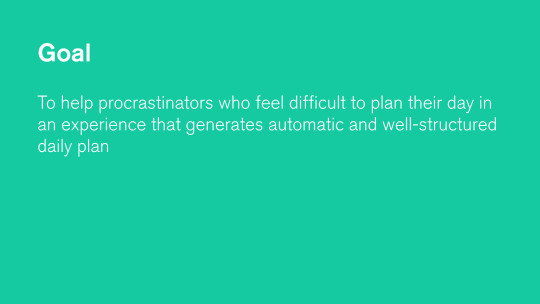
Then I came up with a new idea which is mainly to help people plan their day by generating a to-do list that includes not only things people need to do but also things they want to do automatically.
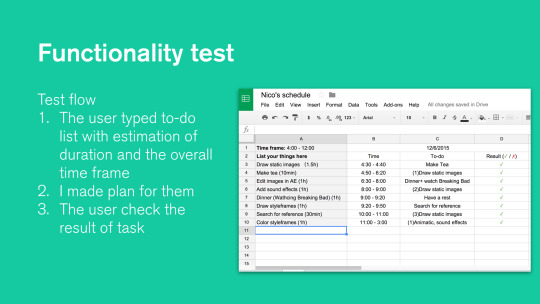
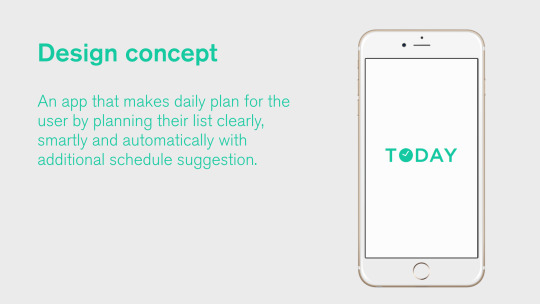
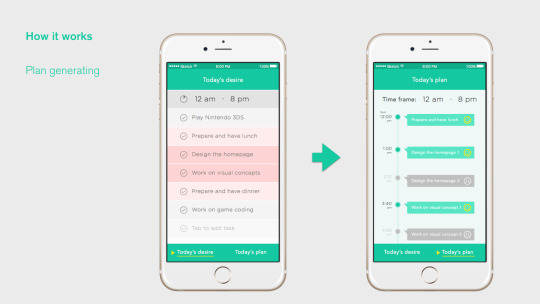
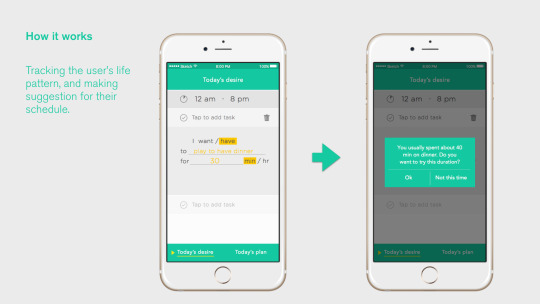
Here are main features of my idea:
The app will make a daily schedule for the user with clear prioritized tasks and things the user wants to do also
The app could track the user’s habit and alert people when they may have wrong estimation of task duration.
The app differentiates working and non-working tasks. For the working tasks which may have long duration, it break the task automatically to several sections as 1 hr in maximum for each one.
This is a link of prototype but showing main screens only.
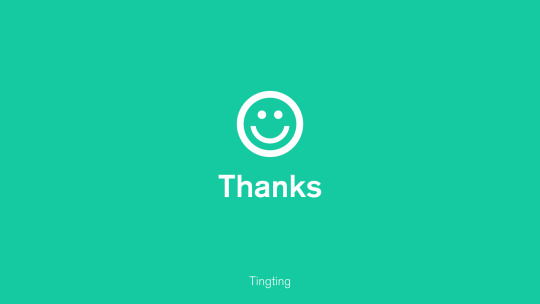
0 notes
Text
Good Design ----- by Julie Zhuo
https://medium.com/the-year-of-the-looking-glass/good-design-a89c15136ba6#.ki8za9aj4
It always needs many iterations to get an OBVIOUS solution for design.
0 notes
Text
Finds on survey of “you are procrastinating for...”
To test my recent hypothesis which is about giving entertainment/ relax permission to procrastinators before they work, I did a survey to see people’s “schedule” of procrastination hopefully.
The result is interesting for two facts. First, less people fill this survey than last time. Second, many people said they are stuck in one question and even procrastinate for answering this question.
I made 3 questions:
1. When do you generally procrastinate?
Before getting start / During working / By the end of finishing / All above
2. What do you usually do when you are procrastinating?
Playing games / Looking at social media feed / Chatting with friends / Online shopping / Watching Tv or videos / Laying on the bed / Over sleeping / Doing housework / Other 3. Think about the assignment you need to finish within 3 days. Then how long do you generally spend on things that you think you procrastinate for?
* Make a list if you need to, please be specific about each one. (e.g 1-2 hours for playing games...) Or describe what do you usually do for these days. (e.g do you get start early? How do you spend time on distractions or entertainments?)
Findings
The first two questions are very usual, I consider the third one as key question to test for this time. But I need to find a more proper way to collect data. Since I want to track people’s working no more than 3 days, so 3 days is my time constraints. It’s hard to imagine things that will happen in the future, it should be “thinking about the past”. Also, although 3 days seems to be short, but it’s not easy to calculate specifically how much time you spend on certain things.
Based on current feedbacks I got, I noticed that both goals and deadline matters a lot to the test. No matter I want to test if mutual accountability works or this hypothesis works, I should put these two things into process design.
Next Plan
1. Find several people and track their 3 days life.
2. Things I want to know everday will be their current assignment and due, what did they do today, how did they feel and maybe what’s their expectation?
0 notes
Text
New inspiration from “ This Is The #1 Ritual You Need To Do Every Day”
http://www.bakadesuyo.com/2015/10/ritual/
This article inspired me a lot recently.
Rituals seem not to have connections with procrastination. It’s used a lot in history story as people do it on purpose ----- for making themselves feel better and praying for good luck.
But if I start from this point that this is a thing that people do it for specific reason, and most of time, if people have this habit, they will do it anyway, or say, they have to do it. We all agree people get benefit from rituals, so is there any way we could apply it to our work model?
Then I rethink about general to-do list app, or other ideas for improving procrastination, I found that people want to eliminate things that distract them or make them procrastinate from their work. But as we all know it’s nearly impossible because of human nature. Procrastinators always fight against the negative part of nature which is lack of motivation, laziness or not being self-discipline.
However, don’t people have desire to see what happened to their friends from Facebook? Don’t they want to have a break when they feel tired or stressful? Shouldn’t people find alternative ways when they just don’t want to work?
New Hypothesis
I believe people could be more productive if they fulfill the need for things that cause them distracted with given a limited time.
I will know this is right when people not only are able to finish works, but also reach their expectation for time-consumption on entertainment.
Potential solutions:
1. Entertainment to-do list / list for everything you want to do
For this test, people are not going to force themselves on working. They could spend time on entertainment stuff that they think they shouldn’t do a lot but they will still do.
The goal is for helping them find balance of time for working and time for playing. It maybe a list for things they like to do everyday, and they’ll achieve each goal one by one to feel motivated. Think about task in the game. Or it’s a list for everything instead of only including working. I also want to think about combine the focusing time idea from first dirty prototype to this one.
2. Mutual accountability vs mutual entertainment
Since people have social need, maybe I could think about turn serious accountability to more natural way. But constraints I designed is important. It may work for people who are not only working each other, but also play each other.
3. TBD
Plan
Do a survey about what do people procrastinate for and understand how entertainment influence their working
Choose one of the solutions above and make structure for testing
Document the process to see which part works and which not
0 notes
Text
Thoughts for “The Way Things Go”
dailymotion
I’ve seen many experiments like this ----- People build structure for various items, once you make it start, items could trigger next action for other items by following the routine that people designed before.
It’s also like Domino Effect, but the form could be more complicated than putting objects in one line. In this kind of experiment, both sequence and connection point influence the whole design process a lot.
0 notes
Text
Assumption map

This is my assumption map around procrastination problem.
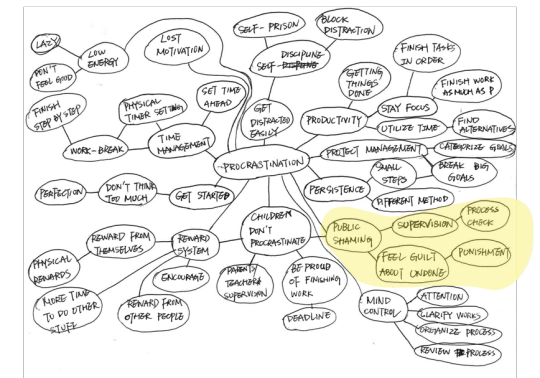
3 Hypothesis:
1. Consistent small steps for big goal
I believe people can accomplish big goal if they can finish small steps one by one.
I will know this is right by knowing how to break down big goals into pieces, so that procrastinators could follow comfortable pace for the work.
2. Distraction blocking
I believe people can focus on working if they can block distractions in environment as many as possible.
I will know this could be true if a person works in a space which ideally removes all distractions, then the user can only do nothing but working
3. Public shaming, reward, social supervision
I believe people need to be supervised in the process. They feel guilt if they didn’t finish the work, and feel accomplished if they finish and get rewards.
I will know this is true when we make our working process public, and people surround us engaged during the process by providing sufficient rewards or supervision or even both, also get punishment after undone work, to make procrastinators value time/ project itself more.
0 notes
Text
Brainstorming exercise result
In this week class, we did an exercise that three classmates in section B expanded ideas for other people by following a structured way. As a result, I got interesting point of views from Emily and Carrie.
Problem space
Emily- 1. What if the person does not know how to set goals or manage time?
2. For procrastinators, what if they don’t know where to start?
3. How do procrastinators deal with pressure?
Carrie- 1. How do procrastinators get started?
2. Think like a child - Is it because they are simpler rewards that work for children? As an adult, do we just have too many alternatives? what is the problem?
3. What does it mean to be “productive”? “persistent”? (To be more specific about the definition of “being productive” in this context, does it mean getting things done quickly, or not wasting time by finishing alternatives, etc...)
4. Have you ever used any of these techniques? Why or why not?
Potential approaches thinking
Emily- 1. Smart home monitor for procrastinators
The user will start to set a goal about the assignment, time scale and things will make him/ her get distracted. After that, once he/ she starts doing the taskR, almost everything in house is disable to get access (such as even water, fridge, doors...). If the user will use the internet, browser will track online activity to see if you are browsing with your goal. 25 mins (for example) later, the computer will analyze things you’ve done and tell if you did related stuff.
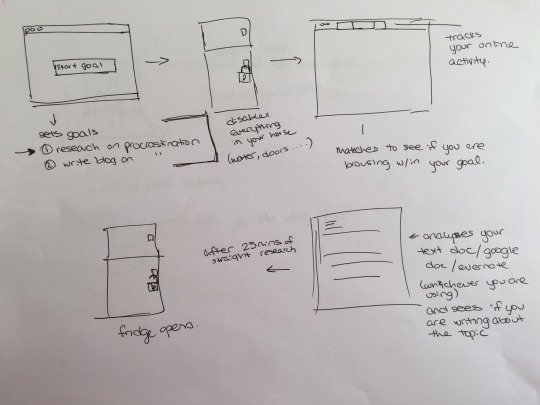
2. Random box of surprise
The user need to set a goal of task first, and also the time to finish it. After accomplishing work, there is a box of random surprise preset by users’ friend or themselves sending the present to users.
3. Auto-tweets for undone work
The form has not been decided yet, but the function is like social media will supervise if the user finishes the goal. If the answer is negative, social media will post something like “XXX didn’t finish the goal of ……”, and it can’t be deleted.
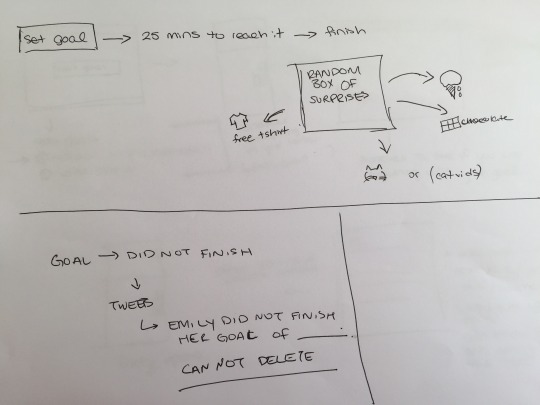
Carrie- 1. Partner’s help
This is particular for people who have work to finish but also have appointment with their friends later. When the users starts to do homework, their friends will help to check the process. If the work is done, uses can hang out with friends, if not, friends won’t allow to go with them.
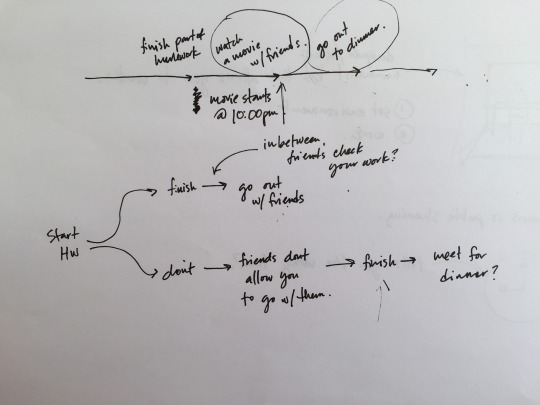
2. Designer’s minimalist working environment
Designers could set their working environment that hopefully block distractions as many as possible
3. Clock/ Real time adjustment
Some people set the time ahead the real time on purpose. They may want to feel that they can control the time, or they want to leave a space for no-time-left situation. Think about how it could work for procrastinators?
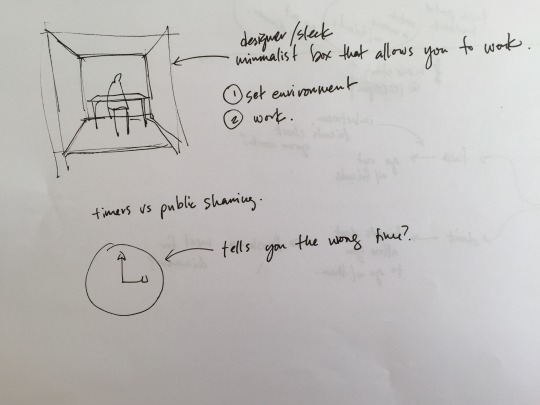
There are some really good points that I want to explore next:
The way that helps people know how to set goals or get start
Smart self-prison - the way to help people block distraction, at the same time, procrastinators get supervised
Power of social engagement - it could be reward from people you know well, control assistance from friends or family, or public shaming
1 note
·
View note
Text
Think like a child
This week I grouped with Karen, we were expected to explore unexpected areas related to our current topics. Karen shared me a very interesting direction which derived from a podcast named “Think like a child”.
http://freakonomics.com/2014/05/22/think-like-a-child-full-transcript/
It talked about a magician named Dubner and he performed a magic show to kids and adults. He separately asked children and adults to tell him the trick for this magic, and as a result kids’ answers were getting closer one by one then one of them answered it correctly. However, adults failed to do it and their answers seemed ridiculous.
It turned out that when faced with a problem, kids are generally more straight forward and start from the small point. For adults, they intend to avoid little stuff because they always think big scale is more important than small things.
Also, I had another interesting finding: most people wouldn’t be a procrastinator when they were very young. During the conversation with Karen and Emily, I was surprised that we three worked fast and never delay works in childhood. It seems that children feel more guilt if they didn’t finish homework well, and it’s kinda important for them to take it as a way to show off. The reward seems to work better at that time, or more appealing, for example, parents rewarded kids when they did good job. I knew when I was young, I would finish homework fast and in good quality so that I could have more playing time, that was much more attractive than any other rewards.
I started to procrastinate when I went to middle school, I didn’t remember what is the turn point and how it influenced me and dragged me into deep. But this is a good direction to think about next step.
0 notes
